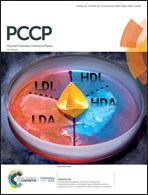Electrochemical phase transformation accompanied with Mg extraction and insertion in a spinel MgMn2O4 cathode material†
Abstract
One of the key challenges when developing magnesium rechargeable batteries (MRB) is to develop Mg-intercalation cathodes exhibiting higher redox potentials with larger specific capacities. Although Mg-transition-metal spinel oxides have been shown to be excellent candidates as MRB cathode materials by utilizing the valence change from trivalent to divalent of transition metals starting from Mg insertion, there is no clear evidence to date that Mg can be indeed extracted from the initial spinel hosts by utilizing the change from trivalent to quadrivalent. In this work, we clearly present various experimental evidences of the electrochemical extraction of Mg from spinel MgMn2O4. The present electrochemical charge, i.e., extraction treatment of Mg, was performed in an ionic liquid at 150 °C to ensure Mg hopping in the spinel host. Our analyses show that Mg can be extracted from Mg1−xMn2O4 up to x = 0.4 and, afterwards, successively be inserted into the Mg-extracted (demagnesiated) host via a two-phase reaction between tetragonal and cubic spinels. Finally, we also discuss the difference in electrochemical features between LiMn2O4 and MgMn2O4.



 Please wait while we load your content...
Please wait while we load your content...